#Intelligent Electronic Lock Market share
Explore tagged Tumblr posts
Text
Intelligent Electronic Lock Market Report, Size, Share, Forecast by 2025-2033

The Reports and Insights, a leading market research company, has recently releases report titled “Intelligent Electronic Lock Market: Global Industry Trends, Share, Size, Growth, Opportunity and Forecast 2025-2033.” The study provides a detailed analysis of the industry, including the global Intelligent Electronic Lock Market, size, trends, and growth forecasts. The report also includes competitor and regional analysis and highlights the latest advancements in the market.
Intelligent Electronic Lock Market Overview
The global intelligent electronic lock market was valued at US$ 2.45 billion in 2024 and is expected to register a CAGR of 6.8% over the forecast period and reach US$ 4.43 billion in 2033.
The electronic lock market encompasses locking systems with the use of wireless technology, and smart technology for enhancing safety and convenience. These locks are used in residential, commercial, industrial, and institutional settings. Smart electronic locks are different from traditional locks, as locks can be operated using app. Smart security cameras play an essential role in a modern security solution due to their connection to smart home ecosystems.
Request for a sample copy with detail analysis: https://www.reportsandinsights.com/sample-request/1820
In recent years, the worldwide market for the intelligent electronic lock has witnessed significant growth, owing to spiking security concerns, the rise in the number of smart homes, and the Internet of Things (IoT). In the North America and Asia-Pacific regions adoption of Smart City Development is a dominant region of the market while Europe looks to have strong potential. The competition in the market is intense as strategic move made key players to conduct research and development. The residential and commercial demand continues to rise, resulting in good growth of the market.
Intelligent Electronic Lock Market Growth Factors & Challenges
Many factors are driving the growth of the intelligent electronic lock market. As more people are living in cities, and as incomes of the middle class in emerging economies are rising, so is the demand for smart and safe homes. Smart home technology is gaining popularity which is making these smart locks more readily available and desirable. Furthermore, companies and organizations are investing into digital security mechanisms to manage access control and improve operational efficiency. The increasing installation of smart locking systems is also aided by government initiatives to promote smart cities.
Even with major growth prospects, the smart electronic locks market faces challenges. The high cost of installation and concern of cyber theft hinder large-scale adoption, especially in underdeveloped parts of the world. Users can find it hard to adjust to issues related to the legacy system. They must also conduct regular software updates. Furthermore, the hesitation of consumers to trust electronic systems like power locks over conventional locks could hinder traditional adoption.
Key suggestions for the report:
By Type, Bluetooth WiFi enabled lock is expected to hold the largest market share in the forecasted period. All gadgets and appliances having the feature of IoT are becoming increasingly popular and we are seeing that the integration of IoT with daily life is getting better and better. These locks can be operated from your smartphone and can also connect with a voice assistant. Because of this convenience, they’re popular with home and business owners.
The commercial segment is projected to be the largest subsegment in the By End Use segment during the forecast period. More and more offices, retail stores, co-working spaces and corporate buildings seek reliable security systems for protection against unwanted incidents. More and more enterprises are adopting intelligent electronic locks that ensure better access control, track entry and exit logs, and conduct security operations remotely. Subsequently, demand in this subsegment of electronic lock is increasing.
According to forecasts, the subsegment which is likely to dominate in the By Application segment is office and commercial security. The rising demand for safe work environments, adherence to safe standards and installations, and the need for effective access management systems are key drivers of this demand. Intelligent electronic locks help with scalability and centralized control. It can be integrated with a more extensive security system. Office and commercial establishments use them for security.
The report presents information related to key drivers, restraints, and opportunities along with detailed analysis of the intelligent electronic lock market share.
Key Trends in Intelligent Electronic Lock Industry
The smart electronic lock market is seeing some important trends. Biometric authentication is gaining traction, including fingerprints and faces as reinforcements, meaning the user must be present. Integrating with voice assistants and mobile apps is also on the rise, allowing people to go hands-free when controlling locks through their smart home platforms. Another trend we are seeing is the ability to use artificial intelligence for predictive access management, and better threat detection. Smart locks have become more sustainable and energy efficient as manufacturers aim for eco-friendly products.
Intelligent Electronic Lock Market Key Applications & Industry Segments
The intelligent electronic lock market is segmented by type, end-use, application and region.
By Type
Biometric Locks
Keypad Locks
Bluetooth/Wi-Fi-enabled Locks
RFID/NFC-enabled Locks
Magnetic Strip Locks
By End-use
Residential
Commercial
Industrial
By Application
Home Security
Office/Commercial Security
Hospitality
Government and Defense
Automotive
Healthcare
Others
By Region
North America (US and Canada)
Latin America (Brazil, Mexico, Argentina, & Rest of LATM)
Europe (Germany, United Kingdom, France, Italy, Spain, Russia, Poland, Benelux, Nordic, & Rest of Europe)
Asia Pacific (China, Japan, India, South Korea, ASEAN, Australia & New Zealand, & Rest of Asia Pacific)
Middle East & Africa (Saudi Arabia, South Africa, United Arab Emirates, Israel, & Rest of MEA)
Leading Manufacturers in the Intelligent Electronic Lock Market
Some of the key manufacturers which are included in the intelligent electronic lock market report are:
Assa Abloy AB
Allegion plc
dormakaba Holding AG
Salto Systems S.L.
Samsung Electronics Co., Ltd.
Honeywell International Inc.
Siemens AG
Schneider Electric SE
Panasonic Corporation
Bosch Security Systems Inc.
Kwikset Corporation
August Home Inc.
LockState
ADEL Locks
Mul-T-Lock Ltd.
Key Attributes
Report Attributes
Details
No. of Pages
240
Market Forecast
2025-2033
Market Value (USD) in 2024
2.45 billion
Market Value (USD) in 2033
4.43 billion
Compound Annual Growth Rate (%)
6.8%
Regions Covered
Global
View Full Report: https://www.reportsandinsights.com/report/digital-twin-market
If you require any specific information that is not covered currently within the scope of the report, we will provide the same as a part of the customization.
About Us:
Reports and Insights consistently mееt international benchmarks in the market research industry and maintain a kееn focus on providing only the highest quality of reports and analysis outlooks across markets, industries, domains, sectors, and verticals. We have bееn catering to varying market nееds and do not compromise on quality and research efforts in our objective to deliver only the very best to our clients globally.
Our offerings include comprehensive market intelligence in the form of research reports, production cost reports, feasibility studies, and consulting services. Our team, which includes experienced researchers and analysts from various industries, is dedicated to providing high-quality data and insights to our clientele, ranging from small and medium businesses to Fortune 1000 corporations.
Contact Us:
Reports and Insights Business Research Pvt. Ltd. 1820 Avenue M, Brooklyn, NY, 11230, United States Contact No: +1-(347)-748-1518 Email: [email protected] Website: https://www.reportsandinsights.com/ Follow us on LinkedIn: https://www.linkedin.com/company/report-and-insights/ Follow us on twitter: https://twitter.com/ReportsandInsi1
#Intelligent Electronic Lock Market share#Intelligent Electronic Lock Market size#Intelligent Electronic Lock Market trends
0 notes
Text
[IOTE2025 Shenzhen Exhibitor] Exhibitor Introduction Collection
With the rapid development of artificial intelligence (AI) and Internet of Things (IoT) technologies, their integration is becoming increasingly close and is profoundly influencing technological innovation across various industries. AGIC + IOTE 2025, the 24th International Internet of Things Exhibition — Shenzhen Station, will take place from August 27 to 29, 2025, at the Shenzhen World Exhibition & Convention Center. IOTE 2025 is set to be an unprecedented professional exhibition event in the field of AI and IoT. The exhibition scale will expand to 80,000 square meters, focusing on the cutting-edge progress and practical applications of “AI + IoT” technology. It will also feature in-depth discussions on how these technologies will reshape our future world. It is expected that over 1,000 industry pioneers will participate to showcase their innovative achievements in areas such as smart city construction, Industry 4.0, smart home life, smart logistics systems, smart devices, and digital ecosystem solutions.
Many high-quality companies will appear in this exhibition as exhibitors. We welcome all industry friends to visit, learn and communicate, and participate in the industry event.
This article will introduce the following exhibitors:
1.Shenzhen Xinda Meng Technology Co.,Ltd
2.AXGOOD
3.GUANGZHOU CHI LI AUTOMATION EQUIPMENT CO., LTD.
4.SHENZHEN GARZOON ELECTRONICS CO.,LTD
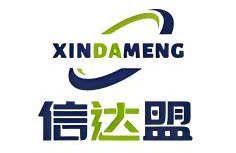
Shenzhen Xinda Meng Technology Co.,Ltd
Booth number: 12D29
August 27–29, 2025
Shenzhen World Convention and Exhibition Center (Bao’an New Hall)
Company Profile
Shenzhen Xinda Meng Technology Co., Ltd. takes “extreme performance, excellent service” as its business philosophy, is committed to the introduction and application of high-end graphics card products and technologies, and focuses on professional fields such as industrial design, image processing, GPU high-performance computing, virtualization technology, deep learning and overall solutions.
As an elite partner of NVIDIA professional visualization GPU products, we continue to enrich and expand our product line to meet the diverse needs of different consumers. With rich experience accumulated in the graphics card industry, Xinda Meng Technology provides users with high-quality products and solutions to help customers achieve comprehensive performance improvements in various fields.
Product Recommendation
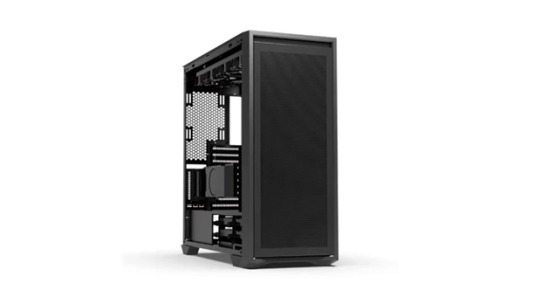
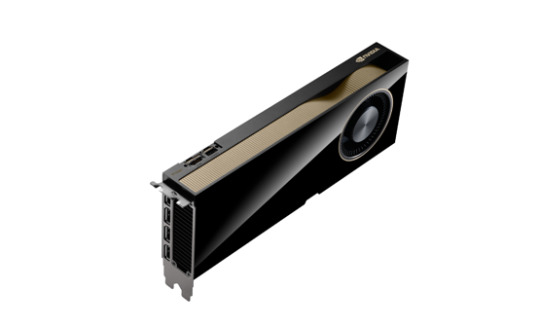
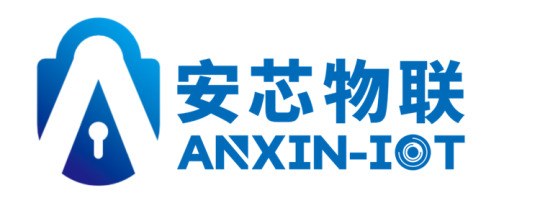
AXGOOD
Booth number: 9D6
August 27–29, 2025
Shenzhen World Convention and Exhibition Center (Bao’an New Hall)
Company Profile
AXGOOD is committed to the research and development and production of smart IoT products. After years of development, it has accumulated a variety of IoT solutions and has occupied a place in the industry. The company’s technical R&D team includes software, hardware, and structural design, which can provide customers with one-to-one team services, tailor-made, and maximize the characteristics of the enterprise to meet the needs of enterprise development and publicity. Since the establishment of the company, the customer industry has covered multiple fields such as communications, towers, railways, electricity, and transportation. We adhere to the service core of professionalism, integrity, and aggressiveness, aiming to connect all business opportunities for enterprises through our unremitting efforts, help customers maintain their advantages in the Internet era and environment, and go with customers through thick and thin, grow together, share joy, and be the leader in technology marketing.
The company’s products include: NB-IOT smart manhole cover | NB-IOT padlock | optical exchange box smart lock | passive electronic lock | tower base station access control electric lock | integrated cabinet lock | IC card swipe electric lock | NFC smart lock and other products.
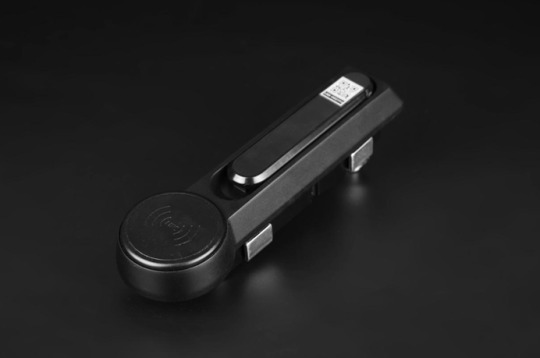

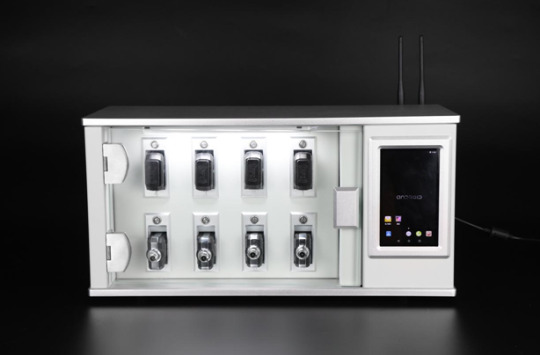
The Bluetooth key management box is a key management terminal product that supports USB/BLE4.0 Bluetooth communication and authorization.
The main body of the product is made of cold-rolled steel plate sprayed with plastic, and the window is made of tempered glass. The overall silver-gray tone is calm and generous. It contains Bluetooth communication and USB line communication. After connection, it can automatically upload the key internal records, authorize the latest permissions, and internal clock and other functions.

GUANGZHOU CHI LI AUTOMATION EQUIPMENT CO., LTD.
Booth number: 9D40
August 27–29, 2025
Shenzhen World Convention and Exhibition Center (Bao’an New Hall)
Company Profile
GUANGZHOU CHI LI AUTOMATION EQUIPMENT CO., LTD. is a high-tech enterprise located in Guangzhou Huangpu Technology Headquarters Port, focusing on the development and production of industrial RFID label automatic compounding equipment, RFID label high-speed UV printing, coding, testing equipment and automatic labeling equipment;
Chi Li’s equipment is widely used in many large, medium and small professional RFID label production companies, with a high market share and has won unanimous praise from customers.
Chi Li’s core team and technical force are the elites and pioneers in the domestic automation production equipment industry, and have been committed to the research and development, production and innovation of RFID label production equipment.
Chi Li’s products are based on the domestic market, and are also exported to American countries such as the United States and Mexico; European and American countries such as Spain, Portugal, the United Kingdom, Germany, Turkey, Morocco, and Southeast Asian countries such as Vietnam, Bangladesh, India, Indonesia, Cambodia, and Myanmar.
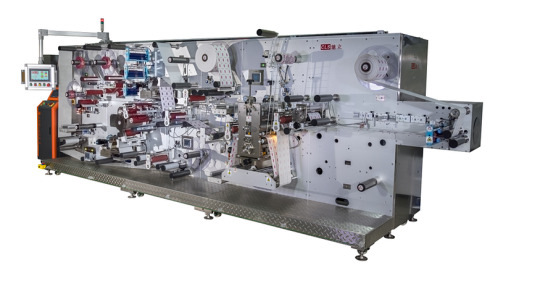
Product: Label automatic laminating machine
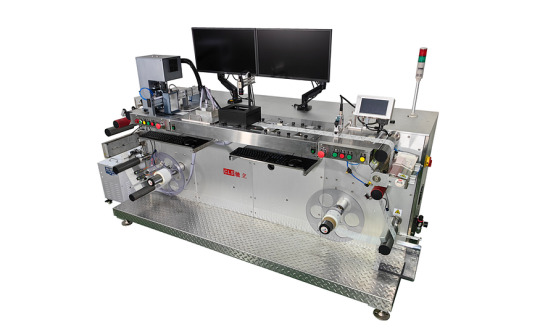
Product: High-speed roll-to-roll label UV printing, coding, and testing equipment
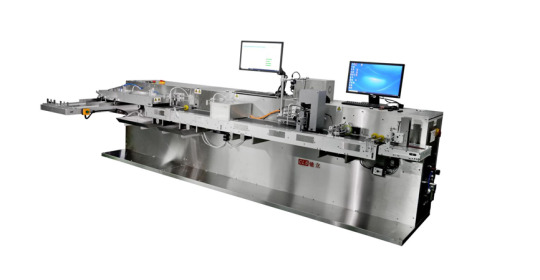
Product: High-speed hang tag UV printing, coding, and testing equipment
Model: CL-526IE
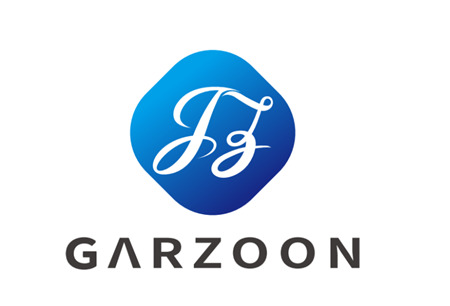
SHENZHEN GARZOON ELECTRONICS CO.,LTD
Booth number: 11A51–2
August 27–29, 2025
Shenzhen World Convention and Exhibition Center (Bao’an New Hall)
Company Profile
SHENZHEN GARZOON ELECTRONICS CO.,LTD, founded in 2012, is a national high-tech enterprise integrating R&D, design, production and sales, and is also a leading supplier of touch display products and application solutions in China. The company focuses on the differentiated and personalized customized development of customer products, covering the R&D, design and production supply of touch screens and LCD screens. The products are mainly used in intelligent hardware products such as security industrial control, smart medical care, smart home, smart Internet of Things and human-computer interaction. As a leading manufacturer of touch technology, Garzoon can provide customers with a full range of touch technology application solutions, including product design, R&D to mass production.
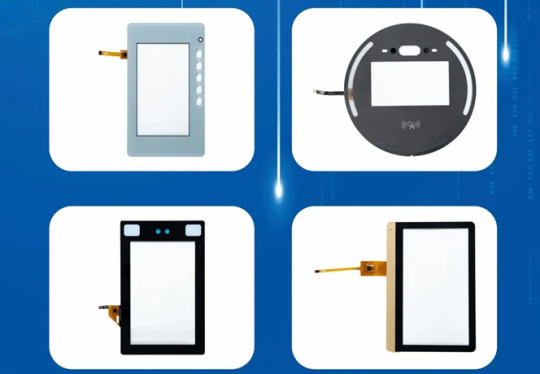
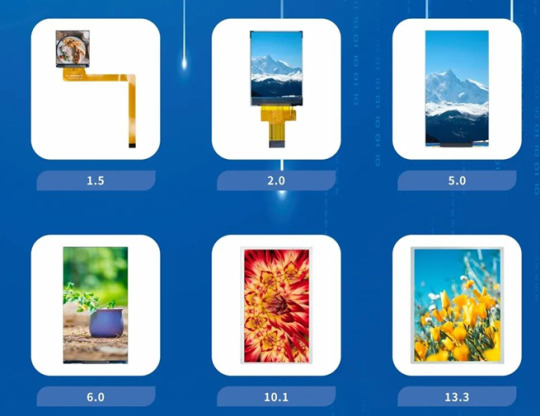
LCD display products are mainly small and medium-sized products, targeting attendance access control, robots, smart hardware, smart small appliances and other product applications. At the same time, there are multiple options for special product applications such as high brightness, wide temperature and high resolution. In the field of touch display products, the company can produce and ship in a variety of combinations in line with the actual needs of customers, such as: cover plate + LCD screen + full lamination, touch screen + LCD screen + full lamination, cover plate + incell screen + full lamination, or single touch screen or single LCD screen production and shipment.
At present, industry trends are changing rapidly, and it is crucial to seize opportunities and seek cooperation. Here, we sincerely invite you to participate in the IOTE 2025, the 24th International Internet of Things Exhibition, Shenzhen Station, held at the Shenzhen World Convention and Exhibition Center (Bao’an New Hall) from August 27 to 29, 2025. At that time, you are welcome to discuss the cutting-edge trends and development directions of the industry with us, explore cooperation opportunities, and look forward to your visit!
0 notes
Text
Wireless Security System Market Size Securing the Future with Seamless Connectivity
In today’s hyperconnected world, the Global Wireless Security System Market Size is witnessing accelerated growth driven by escalating demand for smart surveillance, rising concerns over home and business security, and increasing IoT integration across industries. According to Market Size Research Future, the market is projected to reach USD 140.6 Billion by 2032, growing at a CAGR of 11.20% from 2023 to 2032. As organizations and consumers pivot toward agile, wire-free solutions, wireless security systems are emerging as the cornerstone of modern security infrastructure.
Market Size Overview
Wireless security systems utilize Wi-Fi, Bluetooth, and cellular technologies to communicate without traditional wiring. These systems offer unmatched convenience, scalability, and cost-efficiency, making them highly suitable for both residential and commercial applications. Increasing urbanization, remote surveillance needs, and government initiatives on public safety are fueling the adoption of wireless security frameworks globally. With seamless integration capabilities across smart home ecosystems, the market continues to evolve toward more intelligent, automated, and AI-enabled systems.
Enhanced Market Size Segmentation
By Component:
Hardware: Cameras, sensors, control panels, sirens
Software: Monitoring and alert systems, cloud-based analytics
Services: Installation, maintenance, and managed services
By Type:
Wireless Fire Protection System
Wireless Video Surveillance System
Wireless Access Control System
Wireless Intruder Alarm System
By End-User:
Residential
Commercial
Industrial
Government
By Region:
North America
Europe
Asia-Pacific
Latin America
Middle East & Africa
Trends Shaping the Wireless Security System Market Size
AI and Machine Learning Integration: Real-time threat detection, facial recognition, and behavior analysis are being enhanced by AI-powered surveillance tools.
Cloud-Based Monitoring: The shift to cloud services allows remote access to security data and centralized control across multiple locations.
5G Connectivity: The adoption of 5G is bolstering faster and more stable connections, improving system responsiveness and video quality.
Smart Home Expansion: As smart home adoption surges, demand for wireless, app-controlled security solutions is growing in tandem.
DIY Security Systems: Consumers are leaning towards customizable, self-installed solutions that offer flexibility without professional assistance.
Segment Insights
Residential Sector Dominance: The residential segment holds a substantial share due to the rising incidence of home break-ins and consumer awareness about safety. Wireless doorbell cameras, motion sensors, and smart locks are in high demand.
Commercial Segment Growth: Offices, retail outlets, and warehouses are increasingly relying on wireless security systems for intrusion detection, asset protection, and employee safety. Multi-location monitoring and video analytics are key offerings here.
Wireless Video Surveillance Leads by Type: Among system types, wireless video surveillance dominates due to its real-time visibility, cloud storage features, and increasing usage in smart city infrastructure.
End-User Insights
Residential Users prefer user-friendly, plug-and-play systems with mobile alerts and live streaming functionalities.
Commercial Entities demand more comprehensive systems that combine video surveillance with access control and alarm systems.
Industrial Users utilize rugged wireless systems to monitor large facilities and hazardous environments remotely.
Government Sector investments in surveillance infrastructure—especially in public places, transportation hubs, and critical infrastructure—are significantly contributing to market expansion.
Key Players
Honeywell International Inc.
Bosch Security Systems
ADT Inc.
Hangzhou Hikvision Digital Technology Co., Ltd.
Tyco International
Samsung Electronics Co., Ltd.
Vivint Smart Home, Inc.
SimpliSafe, Inc.
Axis Communications AB
Abode Systems, Inc.
Conclusion
The Global Wireless Security System Market Size is rapidly transitioning into an AI-powered, cloud-integrated, and user-centric ecosystem. As security threats grow more sophisticated and remote access becomes a norm, the shift from traditional to wireless systems is not just inevitable—it is strategic. Businesses and consumers alike are investing in smart, scalable, and sustainable security infrastructures that ensure peace of mind and operational efficiency.
Trending Report Highlights
Proximity and Displacement Sensor Market Size
Sapphire Semiconductor Market Size
SCARA Robot Market Size
Piezoelectric Hemisphere Market Size
Pin Fin Heat Sink for IGBT Market Size
Porous Silicon Substrate Market Size
Power Discrete and Module Market Size
Video Measuring System Market Size
Servo Drive Market Size
0 notes
Text
Anaerobic Adhesives Market Share, Industry Growth, Trend, Drivers, Challenges, Key Companies by 2034
The Global Anaerobic Adhesives Market reached USD 715.4 million in 2024 and is projected to expand at a steady CAGR of 5.5% from 2025 to 2034. This growth can be attributed to the increasing demand for reliable, high-performance bonding solutions across various industries, particularly automotive, aerospace, and electronics. These sectors require adhesives that can withstand harsh conditions such as extreme temperatures, vibrations, and corrosive environments. Anaerobic adhesives play a pivotal role in ensuring the stability and reliability of components in these demanding applications. With advancements in manufacturing technology and a heightened focus on innovation, the market is witnessing a surge in demand, further driving the adoption of anaerobic adhesives.
Get sample copy of this research report @ https://www.gminsights.com/request-sample/detail/7383
The market is segmented by product type, with key categories including thread lockers, gasket sealants, thread sealants, retaining compounds, structural adhesives, and others. Among these, threadlockers dominate the market, contributing USD 263.7 million in 2024. Designed to secure threaded fasteners, thread lockers prevent loosening caused by vibrations, thermal expansion, or external forces. They are essential for industries like automotive and aerospace, where maintaining component integrity is critical. Threadlockers have also become increasingly popular due to their ability to replace mechanical fasteners, which simplifies assembly processes and enhances overall performance.
In terms of adhesive types, the anaerobic adhesives market is divided into acrylic, silicone, butyl, and other variations. Acrylic adhesives hold the largest share, accounting for 49% of the market in 2024. Renowned for their superior bonding properties, acrylic-based anaerobic adhesives offer excellent adhesion to metals and demonstrate remarkable resistance to chemicals, heat, and vibrations. These qualities make them ideal for a wide range of industrial applications, including thread locking, retaining compounds, and gasket sealing. Furthermore, acrylic adhesives are known for their fast curing time and cost-effectiveness, making them a preferred choice for industries such as automotive, aerospace, and manufacturing.
Browse complete summary of this research report @ https://www.gminsights.com/industry-analysis/anaerobic-adhesives-market
The U.S. anaerobic adhesives market was valued at USD 172.9 million in 2024, with demand primarily driven by the automotive, aerospace, electronics, and medical device sectors. These industries require high-performance bonding solutions to ensure the durability and reliability of their components. The U.S. market benefits from its advanced manufacturing capabilities and a strong focus on technological innovation, both of which contribute to the growing adoption of anaerobic adhesives. The presence of major industrial players and a well-established customer base further support the market's expansion, positioning the U.S. as a key player in the global anaerobic adhesives market.
About Global Market Insights
Global Market Insights Inc., headquartered in Delaware, U.S., is a global market research and consulting service provider, offering syndicated and custom research reports along with growth consulting services. Our business intelligence and industry research reports offer clients with penetrative insights and actionable market data specially designed and presented to aid strategic decision making. These exhaustive reports are designed via a proprietary research methodology and are available for key industries such as chemicals, advanced materials, technology, renewable energy, and biotechnology.
Contact Us:
Aashit Tiwari
Corporate Sales, USA
Global Market Insights Inc.
Toll Free: +1-888-689-0688
USA: +1-302-846-7766
Europe: +44-742-759-8484
APAC: +65-3129-7718
Email: [email protected]
0 notes
Text
How Crown LNG ($CGBS) Could Quietly Make Early Shareholders Very Loudly Rich
There is something deliciously deceptive about a stock that costs less than a subway swipe yet straddles the same mega-trends driving Exxon, Shell and Berkshire Hathaway to write multi-billion-dollar cheques. Crown LNG Holdings, ticker CGBS, finished the week at $0.11—a price that screams “penny stock” even while the company’s to-do list reads like a Fortune 500 growth plan. The mismatch is so stark that it feels less like a valuation gap and more like a time warp: Wall Street is still pricing yesterday’s risk while Crown is sprinting toward tomorrow’s cash flow.

The macro tailwind nobody can ignore Start with demand. Shell’s 2025 LNG Outlook forecasts about a 60 % surge in global liquefied-gas consumption by 2040, propelled largely by Asia’s industrial boom and the electricity hunger of digital infrastructure. ExxonMobil echoes the theme, saying it is “on track to nearly double its LNG portfolio by 2030,” with projects on four continents already under construction. Berkshire Hathaway, which rarely overpays for hype, bought a 75 % stake in the Cove Point terminal for roughly $3.3 billion—just one facility—because Warren Buffett sees decades of toll-booth cash flows in LNG. If the world’s most disciplined capital allocators are leaning hard into liquefied gas, a developer trading for sixty-odd million dollars begins to look like buried treasure.
The second tailwind is artificial intelligence. The International Energy Agency projects that global data-centre power demand will more than double to about 945 TWh by 2030—roughly Japan’s entire electricity use today—and calls out AI workloads as the prime culprit. Gas-fired turbines remain the only dispatchable source that can ramp fast enough to keep GPUs humming around the clock. A Reuters deep-dive last week made the connection explicit: energy majors are piling into Southeast-Asian gas precisely because data-centre developers have nowhere else to turn for reliable electrons. Crown’s planned terminals sit squarely in that power-hunger corridor.
A four-continent supply web hiding in plain sight. Crown’s blueprint begins with Kakinada, the first gravity-based LNG terminal ever licensed for 365-day operation on India’s cyclone-prone east coast. Its seven-million-tonne capacity would feed power plants and, increasingly, India’s hyper-scale server farms—just as New Delhi pushes gas to 15 % of the national energy mix. Cross half a world to Scotland’s Firth of Forth, where Crown is engineering an import hub aimed at taming Britain’s winter gas price spikes. Slide south-east to Vietnam, an economy whose data-centre footprint is exploding and whose planners forecast multi-million-tonne LNG deficits by 2030. Close the circuit in the U.S. Gulf of Mexico, where Crown’s proposed floating export platform would funnel cheap Permian and Haynesville molecules straight into its own receiving terminals. That is a vertically stitched, four-continent network—a micro-cap doing an impression of an integrated major.
Sceptics will note that Crown has no revenue yet, and they are right. But those same sceptics must grapple with an anomaly: not one core Crown executive has sold a single share in two years. In SPAC land, insiders usually sprint for the exits the day lock-ups expire. Here, they have welded their wallets to the rails. Either they are terrible traders—or they see value invisible to the wider market. For investors who prize alignment, that zero-sale streak is the loudest bullish klaxon in the small-cap universe.
Consider replacement cost. Building just one Kakinada-scale terminal runs to about $1 billion. Crown plans at least two such assets plus an export platform, yet its enterprise value sits around $60 million. Berkshire’s single Cove Point stake, again, cost fifty-plus times Crown’s entire market cap. Even a modest industry rule of thumb—valuing an LNG project at 10-15 % of cap-ex at Final Investment Decision—would catapult Crown’s equity into nine-figure territory the moment financing is nailed down. Eleven cents simply does not compute once steel hits seawater.
Management says it is targeting FID on the Scottish project as early as 2025 and Kakinada by 2026. Each milestone tends to unlock construction debt, long-term offtake contracts, and fresh equity interest. For context, Excelerate Energy’s valuation lifted immediately after its first FSRU charter passed bankable diligence—even before gas flowed—because the market finally trusted the revenue model. Crown is racing toward the same credibility inflection, but from a share price barely scraping double digits.
Wall Street’s crowded trades, mega cap tech, AI chips, large-cap energy, are priced for perfection. Crown LNG is priced as if the future never arrives. Yet Shell, Exxon and Berkshire believe that same future requires vastly more LNG than the world can currently deliver. If even one of Crown’s projects crosses the debt-financing finish line, the stock’s denominator changes faster than most portfolio screens can refresh.
Investors love to say they learn from missed chances. Apple at four, Amazon at eighty, Tesla at twenty. The common thread is that each looked too small, too risky, too early—right until reality rewrote the narrative. Crown LNG sits in that uncomfortable limbo now: tiny quote, giant ambitions, insiders all-in, macro winds at its back. When the first concrete caisson sinks into Indian waters or the first seabed pile is driven in Scotland, today’s eleven-cent tape will feel like ancient history.
History does not repeat, but it certainly rhymes. If you have ever sworn you would never again overlook the bargain hiding beneath an ugly price, Crown LNG is quietly offering you a redo. The only question is whether you will hear the keystone drop before the rest of the market wakes up.
#CrownLNG#LNG#EnergyTransition#AI#DataCenters#NaturalGas#Exxon#Shell#Berkshire#IEA#SPAC#SmallCapStocks#EnergyStocks#GlobalEnergy#AIInfrastructure#IndiaEnergy#UKEnergy#VietnamGrowth#GulfEnergy#StockMarket#InvestSmart#EmergingMarkets#InfrastructureInvesting
1 note
·
View note
Text
How to Find the Top Cell Phone Wholesale Distributors for Your Business
If you're in the mobile phone buying and selling business, using the best cell phone wholesale distributors is crucial. They provide you with bulk offers on smartphones, enabling you to grow your inventory, cut costs, and increase your profits. If you're just beginning or just trying to expand, knowing how distributors work and where to find them can make you stand out.
Why Work with Cell Phone Wholesale Distributors?
Working with wholesale distributors involves significant advantages. To start, it saves time. Instead of getting individual devices from several sources, you can buy in large quantities from one known source. Distributors also have an extensive range of smartphones from quality brands such as Apple, Samsung, Google, and Xiaomi.
Besides, cell phone wholesale distributors offer competitive prices. Since they work at high volumes, they tend to obtain better prices from manufacturers and transfer the savings to resellers. This ensures you have solid profit margins.
Quality guarantee is another consideration. Good distributors test and grade their phones, so you know what you're purchasing. Some even provide unlocked phones, meaning they don't have any carrier lock and are more popular in the secondary market.
Characteristics of a Trustworthy Distributor
It's not all distributors, though, so here are some things to look for:
Experience: Opt for distributors who have been around for years.
Verified Reviews: Customer reviews can show how trustworthy and truthful a company is.
Device Testing: Make sure they test phones for quality and function.
Unlocked Phones: Steer clear of locked or blacklisted phones to ensure your business's protection.
Responsive Support: A quality distributor will provide supportive and timely customer support.

Where to Find Wholesale Distributors
There are a few solid methods of finding quality cell phone wholesale distributors:
Trade-In Tech: This B2B website deals specifically in electronics and puts you in touch with authenticated distributors. No transaction fees and an international network of sellers make it one of the top tools for creating your supplier list.
LinkedIn: Most distributors have business pages and share notices about inventory. It's also excellent for industry networking in groups.
Facebook Groups: Connect with reseller and wholesale groups to find suppliers and learn insider specials.
Twitter: Look for hashtags such as #wholesale or #electronicsdistributors to find active sellers.
Online Directories: These may list basic contact information, but be careful since some listings could be out of date.
Best Phones in the Resale Market
The resale market is demand-driven, and these models are among the most highly sought-after:
Apple iPhones: High resale value consistently.
Samsung Galaxy: Android models with high feature content and good demand.
Xiaomi and Oppo: Low-cost and very popular in Asian and international markets.
Start Connecting Today
Whether you are purchasing a few devices or in bulk, discovering the correct cell phone wholesale distributors is the foundation for expanding your mobile resale company. With websites like Trade-In Tech, the experience is quicker, safer, and more profitable. Get signed up on Trade-In Tech today to connect with verified wholesalers and begin building your business the intelligent way!
0 notes
Text
Smart Home Market Size, Share, Analysis, Forecast, and Growth Trends to 2032: Challenges in Privacy and Security Ahead
The Smart Home Market was valued at USD 101.1 Billion in 2023 and is expected to reach USD 755.8 Billion by 2032, growing at a CAGR of 25.07% from 2024-2032.
Smart Home Market is experiencing a surge in global adoption, driven by rising consumer demand for convenience, security, and energy efficiency. Across the USA and Europe, households are increasingly integrating devices such as smart thermostats, lighting systems, voice-controlled assistants, and connected appliances to create more responsive and intelligent living environments.
Unlocking Opportunities: The Booming Smart Home Market Landscape in the United States
Smart Home Market continues to thrive as technology becomes more accessible and interoperable. The rapid evolution of AI, IoT, and 5G networks is enabling seamless device communication and automation, while manufacturers focus on offering user-friendly systems that require minimal technical expertise.
Get Sample Copy of This Report: https://www.snsinsider.com/sample-request/2864
Market Keyplayers:
Amazon – Echo Smart Speaker
Google – Nest Learning Thermostat
Apple – HomePod
Samsung – SmartThings Hub
Philips – Hue Smart Lighting
Honeywell – Lyric T5 Wi-Fi Thermostat
ADT – Pulse Smart Security System
LG Electronics – Smart ThinQ Refrigerator
Xiaomi – Mi Smart Home Hub
Ring – Video Doorbell
Bosch – Smart Home Controller
Siemens – Home Automation System
Legrand – Smart Lighting Controls
Ecobee – SmartThermostat with Voice Control
Arlo Technologies – Arlo Pro 4 Security Camera
Market Analysis
The Smart Home Market is being reshaped by lifestyle shifts, sustainability priorities, and technological innovation. Consumers seek solutions that simplify daily tasks, enhance security, and reduce energy costs, while governments encourage adoption through energy-saving incentives and smart city initiatives. The USA leads in terms of device penetration and ecosystem development, while Europe benefits from strong environmental policies and growing awareness around home automation.
Market Trends
Growth in voice-activated assistants and integrated control hubs
Increased adoption of smart security systems (cameras, locks, sensors)
Energy-efficient solutions driving smart thermostat and lighting usage
Interoperability standards improving cross-brand device integration
Rise in remote home monitoring and management features
Expansion of subscription-based smart home services
Focus on data privacy and cybersecurity enhancements
Market Scope
The Smart Home Market is expanding rapidly as technology becomes more intuitive, secure, and affordable. Its reach now extends from single-device users to fully automated homes.
All-in-one smart home platforms
App-based remote control and monitoring
Personalized automation routines for comfort and efficiency
Energy management tools with real-time usage insights
Seamless voice and gesture-based controls
Smart kitchen and bathroom appliance integration
Modular systems enabling gradual home upgrades
Forecast Outlook
The Smart Home Market is poised for accelerated innovation and adoption. With the continuous advancement of AI, machine learning, and wireless communication technologies, smart home ecosystems are expected to become more intuitive, adaptive, and interconnected. Both the USA and Europe are set to drive this momentum, supported by tech-savvy consumers, supportive infrastructure, and an increasing emphasis on sustainable living. Market leaders will focus on creating scalable, secure, and holistic experiences tailored to modern lifestyles.
Access Complete Report: https://www.snsinsider.com/reports/smart-home-market-2864
Conclusion
The future of living is connected, and the Smart Home Market is at the heart of this transformation. From voice-activated lighting in Paris to self-regulating climate systems in San Francisco, smart technologies are reshaping what comfort, control, and efficiency mean at home.
Related Reports:
Analyze consumer preferences for smart speakers across the USA
Analyze Bluetooth 5.0 adoption across the United States
About Us:
SNS Insider is one of the leading market research and consulting agencies that dominates the market research industry globally. Our company's aim is to give clients the knowledge they require in order to function in changing circumstances. In order to give you current, accurate market data, consumer insights, and opinions so that you can make decisions with confidence, we employ a variety of techniques, including surveys, video talks, and focus groups around the world.
Contact Us:
Jagney Dave - Vice President of Client Engagement
Phone: +1-315 636 4242 (US) | +44- 20 3290 5010 (UK)
0 notes
Text
Electronic Home Locks Industry Analysis: Opportunities & Challenges
The global electronic home locks market size is expected to reach USD 5.68 billion by 2030, registering to grow at a CAGR of 8.1% from 2024 to 2030 according to a new report by Grand View Research, Inc. High demand for home automation and advanced security technologies, such as electronics home locks, is expected to be the key factors driving the market. Rising construction activities in developed countries including U.S., Germany, U.K., and France are also expected to assist in growth of this market.
Moreover, integration of innovative technologies, such as Near-Field Communication (NFC), Bluetooth, and voice and face recognition, is expected to boost the product demand. Key companies in the market are focusing on the development of advanced products to gain a competitive edge. For instance, ASSA ABLOY AB introduced a range of electronic locking solutions that features technologies, such as NFC. North America was the dominant regional market in 2018 and is estimated to retain its leading position throughout the forecast period.
The growth is attributed to the rapid expansion of the construction industry, especially in residential sector, in the region. However, Asia Pacific is projected to witness the fastest growth over the forecast period due to high demand for advanced security solutions. The product demand is driven by the increasing residential construction activities, trend of home automation, and disposable income levels in the region. In addition, rising number of branded retail outlets, especially in India and China, is anticipated to contribute to the market in growth.
Electronic Home Locks Market Report Highlights
Biometric door locks use facial recognition, palm recognition, iris recognition, and fingerprint recognition technologies. These advanced attributes improve security and convenience in comparison to standard lock-and-key systems.
Keypad segment held the largest market revenue share of 45.8% in 2023. The demand for the keypad segment in the electronic home lock market is rising due to its convenience, security, and technological advancements.
Residential segment dominated the market in 2023. The growing concern for home security has driven homeowners to seek advanced security solutions, with electronic locks offering enhanced protection through features like remote access, biometric recognition, and real-time alerts.
Increasing usage of smartphones and exposure to digital media, especially in developing countries like India and China, are expected to augment the products sales through online channels
Prominent companies in the electronic home locks market are Vivint, Inc.; Honeywell International Inc.; Allegion; dormakaba Group; Godrej.com; Spectrum Brands, Inc.; Samsung; Salto Systems, S.L.; and Master Lock Company LLC.
Curious about the Electronic Home Locks Z Market? Get a FREE sample copy of the full report and gain valuable insights.
Electronic Home Locks Market Segmentation
Grand View Research has segmented the global electronic home locks market based on product, end-use, and region:
Electronic Home Locks Product Outlook (Revenue, USD Million, 2018 - 2030)
Biometrics
Keypad
Others
Electronic Home Locks End-use Outlook (Revenue, USD Million, 2018 - 2030)
Residential
Commercial
Industrial
Institutional
Electronic Home Locks Regional Outlook (Revenue, USD Million, 2018 - 2030)
North America
US
Canada
Europe
UK
Germany
France
Italy
Spain
Asia Pacific
China
India
Japan
Australia
South Korea
Latin America
Brazil
Middle East and Africa (MEA)
South Africa
UAE
Key Players in the Electronic Home Locks Market
Vivint, Inc.
Honeywell International Inc.
Allegion
dormakaba Group
com
Spectrum Brands, Inc.
Samsung
Salto Systems, S.L.
Master Lock Company LLC
MIWA Lock Co.
Order a free sample PDF of the Electronic Home Locks Market Intelligence Study, published by Grand View Research.
0 notes
Text
Global electronic locks market: from technological innovation to blue ocean breakout, who can seize the next decade?

First, the Chinese market: the rise of the C-end and industry reshuffle in parallel
In 2024, China's smart door lock market experienced a deep adjustment. Data show that the annual omni-channel sales of 17.47 million sets, a slight decline of 3%, but the industry pattern has undergone a fundamental transformation: C-end market share for the first time exceeded 50%, reaching 54.6%, and the online channel contributed to the sales of 7.72 million sets, becoming the main engine of growth. Behind this is the continued cooling of the B-side of the real estate market - the national sales of newly-built commercial properties fell by 22.7%, forcing companies to turn their attention to individual consumers.
Price wars have become the keyword for C-suite competition. The average price of online channels fell to RMB 913 from RMB 1,301 in 2021, and Internet brands such as Xiaomi and Huawei are sinking fast with their traffic advantages. But the price war did not completely devour the market, Deschmann, Cadiz and other brands through the layout of the high-end market of more than 1,500 yuan, successfully achieve a balance between revenue and profit. Data show that the sales of 1500-1999 yuan price segment increased by 31.7% year-on-year in 2024, confirming the coexistence of consumer upgrading and cost-effective demand.

Second, the technology race: from a single function to the security centre
The electronic lock industry is undergoing a metamorphosis from ‘door lock’ to ‘home security centre’. Biometrics has become the core battlefield: 3D structured light face recognition penetration rate soared from 11.5% in 2023 to 38.2%, and finger vein recognition exceeded 13%. Huawei's Hi3861 chip integrates an AI engine, and the success rate of wet hand fingerprint recognition reaches 95%; DSM even applies GPT-4 technology to fingerprint algorithms, solving the pain points of fingerprint abrasion and molting, and realising ‘the more it is used, the more sensitive it is’.
The breakthrough of chip technology provides the underlying support for product upgrading. The Ankai Micropore Ming II chip adopts a dual-core architecture and supports multi-modal biometric fusion; BYD BF5885AM64 integrates the main control and touch module, shortening the development cycle by 40%. These innovations not only improve security, but also promote the expansion of electronic locks to smart cat-eye, millimetre wave radar monitoring, whole-house linkage and other functions, becoming the entry-level device of the smart home ecosystem.
Third, the global opportunity: overseas market into a new engine of growth
Compared with the domestic penetration rate of 27.9%, the penetration rate of less than 3% of the overseas market is called ‘blue ocean’. Mainstream products in Europe and the United States are still dominated by passwords and fingerprints, with functional iteration lagging 1-2 generations behind the domestic market. Chinese brands with technological advantages to open the ‘downward strike’: Deschmann in North America to launch intelligent rental solutions, Cadiz layout of Southeast Asia engineering market, millet ecological chain enterprises through cost-effective products to quickly occupy the market.
According to forecasts, the global electronic lock market size will exceed $26.2 billion in 2025, with a compound annual growth rate of more than 15%. But going overseas is not a straight road: different regional certification standards (such as the EU EN1303, the U.S. ANSI), localised service capabilities and channel construction, will become a key factor in testing enterprises.
Fourth, the future trend: ecological integration and ageing innovation
1. Smart home ecological closed loop: electronic locks are changing from independent devices to intelligent hubs. Huawei, millet through the brand ecosystem to achieve device interconnection, Oribe and other companies have launched a whole-house intelligent custom solutions to solve the problem of multi-brand device compatibility.
2. Aging and special scenarios: voice interaction and emergency alarm functions for elderly users, as well as customised solutions for special scenarios such as cold chain logistics and industrial equipment, have become new growth points.
3. Accelerated localisation of supply chain: the localisation rate of mainstream door lock chips has reached 62% in 2024, and may break through 80% in the next three years, the maturity of the domestic supply chain will further reduce costs and enhance the autonomy of technology.
Conclusion
Electronic lock industry is standing in the ‘technology upgrading’ and ‘globalisation’ of the dual-wheel drive wind mouth. With the accumulation of technology and brand effect, the head enterprise takes the initiative in the price war and technology war; while small and medium-sized brands will face the risk of being eliminated if they can't quickly achieve product differentiation and channel breakthrough. With the deepening application of AI and IoT technologies, as well as the continuous development of overseas markets, the electronic lock industry is expected to usher in a broader development space in the next decade.
0 notes
Text
Smart Speaker Market Dynamics: Insights into Competitive Strategies and Market Positioning
The recently released Fortune Business Insights research on the Global Smart Speaker Market survey report provides facts and statistics regarding market structure and size. Global Smart Speaker Market Size 2025 Research report presents an in-depth analysis of the Global Market size, growth, share, segments, manufacturers, and forecast, competition landscape and growth opportunity. The research’s goal is to provide market data and strategic insights to help decision-makers make educated investment decisions while also identifying potential gaps and development possibilities.
Get Sample PDF Brochure: https://www.fortunebusinessinsights.com/enquiry/request-sample-pdf/106297
Companies Profiled in the Global Smart Speaker Market:
Apple Inc. (California, U.S.)
Avnera Corporation (Oregon, U.S.)
Baidu, Inc. (Beijing, China)
Deutsche Telekom (Bonn, Germany)
Fabriq (England, U.K.)
Facebook (California, U.S.)
Jam Audio (Michigan, U.S.)
KaKao (Jeju-si, South Korea)
Lenovo (Quarry Bay, Hong Kong)
LG Electronics (Seoul, South Korea)
Increased Adoption of Smart Home Products to Aid Market Growth
The smart speaker market growth during 2021-2028 will be heavily influenced by the growing adoption of smart home devices and appliances, including smart kitchen appliances, smart lights, smart locks, security cameras, and smart TVs. Market players are integrating advanced technologies such as Artificial Intelligence of Things (AIoT) into speakers to enable advanced functionality. Xiaomi is reportedly developing an AIoT-based product that can act as a control hub to connect to other IoT products.
However, despite many benefits, several concerns, such as data security, privacy, and compatibility issues, with smartphones and other devices could affect the product adoption.
Ask For Customization: https://www.fortunebusinessinsights.com/enquiry/customization/106297
What exactly is included in the Report?
– Industry Trends and Developments: In this section, the authors of the research discuss the significant trends and developments that are occurring in the Smart Speaker Market place, as well as their expected impact on the overall growth.
– Analysis of the industry’s size and forecast: The industry analysts have provided information on the size of the industry from both a value and volume standpoint, including historical, present and projected figures.
– Future Prospects: In this portion of the study market participants are presented with information about the prospects that the Smart Speaker Market is likely to supply them with.
– The Competitive Landscape: This section of the study sheds light on the competitive landscape of the Smart Speaker Market by examining the important strategies implemented by vendors to strengthen their position in the global market.
– Study on Industry Segmentation: This section of the study contains a detailed overview of the important Smart Speaker Market segments, which include product type, application, and vertical, among others.
– In-Depth Regional Analysis: Vendors are provided with in-depth information about high-growth regions and their particular countries, allowing them to place their money in more profitable areas.
This Report Answers the Following Questions:
What are the Smart Speaker Market growth drivers, hindrances, and dynamics?
Which companies would lead the market by generating the largest revenue?
How will the companies surge the processes adoption amid the COVID-19 pandemic?
Which region and segment would dominate the Smart Speaker Market in the coming years?
Have Any Query? Speak to Our Analyst:
Smart Speaker Market Segments:
By Type
Virtual Assistants
Wireless Speakers
Others
By Application
Residential
Commercial
Table Of Content:
1. Introduction 1.1. Research Scope 1.2. Market Segmentation 1.3. Research Methodology 1.4. Definitions and Assumptions
2. Executive Summary
3. Market Dynamics 3.1. Market Drivers 3.2. Market Restraints 3.3. Market Opportunities
4. Key Insights 4.1 Global Statistics — Key Countries 4.2 New Product Launches 4.3 Pipeline Analysis 4.4 Regulatory Scenario — Key Countries 4.5 Recent Industry Developments — Partnerships, Mergers & Acquisitions
5. Global Smart Speaker Market Analysis, Insights and Forecast 5.1. Key Findings/ Summary 5.2. Market Analysis — By Product Type 5.3. Market Analysis — By Distribution Channel 5.4. Market Analysis — By Countries/Sub-regions
……………
11. Competitive Analysis 11.1. Key Industry Developments 11.2. Global Market Share Analysis 11.3. Competition Dashboard 11.4. Comparative Analysis — Major Players
12. Company Profiles
12.1 Overview 12.2 Products & Services 12.3 SWOT Analysis 12.4 Recent developments 12.5 Major Investments 12.6 Regional Market Size and Demand
13. Strategic Recommendations
TOC Continued……………….
Access Full Report at - Smart Speaker Market:
About Us:
Fortune Business Insights™ Delivers Accurate Data And Innovative Corporate Analysis, Helping Organizations Of All Sizes Make Appropriate Decisions. We Tailor Novel Solutions For Our Clients, Assisting Them To Address Various Challenges Distinct To Their Businesses. Our Aim Is To Empower Them With Holistic Market Intelligence, Providing A Granular Overview Of The Market They Are Operating In.
Contact Us:
Fortune Business Insights™ Pvt. Ltd.
US:+1 424 253 0390
UK:+44 2071 939123
APAC:+91 744 740 1245
Email:[email protected]
0 notes
Text
Intelligent Electronic Lock Market Size Trends by 2025-2033

The Reports and Insights, a leading market research company, has recently releases report titled “Intelligent Electronic Lock Market: Global Industry Trends, Share, Size, Growth, Opportunity and Forecast 2025-2033.” The study provides a detailed analysis of the industry, including the global Intelligent Electronic Lock Market share, size, trends, and growth forecasts. The report also includes competitor and regional analysis and highlights the latest advancements in the market.
Report Highlights:
How big is the Intelligent Electronic Lock Market?
The global intelligent electronic lock market was valued at US$ 2.45 billion in 2024 and is expected to register a CAGR of 6.8% over the forecast period and reach US$ 4.43 billion in 2033.
What are Intelligent Electronic Lock?
An Intelligent Electronic Lock is a sophisticated locking mechanism that employs electronic and digital technologies to deliver advanced security features and remote access control. These locks often feature keyless entry, biometric authentication, and the ability to be monitored and controlled remotely. They are widely used in residential, commercial, and industrial settings to bolster security and convenience. Intelligent electronic locks can be operated using various methods, such as smartphones, keypads, and RFID cards, offering users flexibility and ease of use. Designed to offer a higher level of security than traditional mechanical locks, they come equipped with features like audit trails and real-time notifications to alert users of any unauthorized access attempts.
Request for a sample copy with detail analysis: https://www.reportsandinsights.com/sample-request/1820
What are the growth prospects and trends in the Intelligent Electronic Lock industry?
The intelligent electronic lock market growth is driven by various factors and trends. The market for intelligent electronic locks is growing rapidly, fueled by the increasing demand for advanced security solutions and the rise of smart home automation. These locks offer enhanced security features such as keyless entry, remote monitoring, and compatibility with smart home systems. They are widely used in residential, commercial, and industrial settings due to their convenience and advanced security capabilities. The market offers a variety of products, including biometric locks, keypad locks, and RFID locks, to meet the diverse needs of consumers. Key market trends include the integration of artificial intelligence and machine learning for enhanced security, as well as the development of energy-efficient and environmentally friendly lock systems. Hence, all these factors contribute to intelligent electronic lock market growth.
What is included in market segmentation?
The report has segmented the market into the following categories:
By Type:
Biometric Locks
Keypad Locks
Bluetooth/Wi-Fi-enabled Locks
RFID/NFC-enabled Locks
Magnetic Strip Locks
By End Use:
Residential
Commercial
Industrial
By Application:
Home Security
Office/Commercial Security
Hospitality
Government and Defense
Automotive
Healthcare
Others
Market Segmentation By Region:
North America
United States
Canada
Europe
Germany
The U.K.
France
Spain
Italy
Russia
Poland
BENELUX
NORDIC
Rest of Europe
Asia Pacific
China
India
Japan
South Korea
Australia & New Zealand
ASEAN
Rest of Asia Pacific
Latin America
Brazil
Mexico
Argentina
Rest of Latin America
Middle East & Africa
Saudi Arabia
United Arab Emirates
South Africa
Egypt
Israel
Rest of MEA
Who are the key players operating in the industry?
The report covers the major market players including:
Assa Abloy AB
Allegion plc
dormakaba Holding AG
Salto Systems S.L.
Samsung Electronics Co., Ltd.
Honeywell International Inc.
Siemens AG
Schneider Electric SE
Panasonic Corporation
Bosch Security Systems Inc.
Kwikset Corporation
August Home Inc.
LockState
ADEL Locks
View Full Report: https://www.reportsandinsights.com/report/Intelligent Electronic Lock-market
If you require any specific information that is not covered currently within the scope of the report, we will provide the same as a part of the customization.
About Us:
Reports and Insights consistently mееt international benchmarks in the market research industry and maintain a kееn focus on providing only the highest quality of reports and analysis outlooks across markets, industries, domains, sectors, and verticals. We have bееn catering to varying market nееds and do not compromise on quality and research efforts in our objective to deliver only the very best to our clients globally.
Our offerings include comprehensive market intelligence in the form of research reports, production cost reports, feasibility studies, and consulting services. Our team, which includes experienced researchers and analysts from various industries, is dedicated to providing high-quality data and insights to our clientele, ranging from small and medium businesses to Fortune 1000 corporations.
Contact Us:
Reports and Insights Business Research Pvt. Ltd. 1820 Avenue M, Brooklyn, NY, 11230, United States Contact No: +1-(347)-748-1518 Email: [email protected] Website: https://www.reportsandinsights.com/ Follow us on LinkedIn: https://www.linkedin.com/company/report-and-insights/ Follow us on twitter: https://twitter.com/ReportsandInsi1
#Intelligent Electronic Lock Market share#Intelligent Electronic Lock Market size#Intelligent Electronic Lock Market trends
0 notes
Text
Industry trend|Why does this company lead the global low-power Bluetooth market?
Recently, Nordic Semiconductor (hereinafter referred to as Nordic) made a grand appearance at the 2025 Bluetooth Asia Conference, showcasing a number of cutting-edge Bluetooth technologies and applications such as Bluetooth channel sounding, artificial intelligence/machine learning (AI/ML), continuous glucose monitoring (CGM) and tire pressure monitoring (TPMS) in medical, automotive electronics, and smart home.
On the day of the conference, Nordic accepted a media interview from the smart communication positioning circle and shared the latest progress of its low-power Bluetooth technology, as well as its diversified products and solutions in the fields of medical health, smart home, and industrial Internet of Things.
The new generation of nRF54L series supports Bluetooth channel sounding
As the world's leading low-power Bluetooth solution provider, the new wireless SoC product series consolidates Nordic's leading position in the field of low-power wireless technology. At the 2025 Bluetooth Asia Conference, the nRF54L series was the focus of Nordic's low-power Bluetooth solution.
It is understood that the nRF54L series consists of nRF54L15, nRF54L10 and nRF54L05. All wireless SoCs in this series integrate ultra-low power multi-protocol 2.4 GHz radio and MCU functions, equipped with a 128 MHz Arm Cortex-M33 processor and a comprehensive set of peripherals. The series also provides a variety of packaging and memory size options, using pin-compatible QFN packaging.

In 2024, after the Bluetooth Technology Alliance officially included Channel Sounding as part of Bluetooth 6.0, Nordic announced that its nRF54L and nRF54H series system-on-chips (SoCs) support this technology.
Damien Wong, sales director of Nordic Semiconductor Greater China, said that compared with the previous generation nRF52832, the nRF54L series has significantly improved resource utilization and cost efficiency, and reduced power consumption by 30%.
In addition, the newly added Bluetooth 6.0 channel sounding function further improves the performance of low-power Bluetooth (Bluetooth LE) devices in distance measurement and presence detection, while significantly enhancing technical flexibility and supporting centimeter-level high-precision positioning. This feature can be widely used in scenarios such as item search, asset tracking, inventory management, and pointing remote control, especially in automotive digital keys and smart door locks. It shows great potential.
It is worth noting that the single antenna solution adopted by the nRF54L series has more cost advantages. When combined with the Nordic distance toolbox (NDT) provided by Nordic, the phase ranging and RTT ranging toolkits can improve the accuracy and reliability of distance measurement, and provide safe distance detection for smart door locks and industrial monitoring.
Ai Minhua, Field Application Engineering Manager and Standards and Ecosystem Director of Nordic Semiconductor China, emphasized that when developing the nRF54L series, Nordic put security first, making it have secure boot, secure firmware update, secure storage, TrustZone, encryption accelerator with side channel leakage protection, and tampering detector. These features ensure that devices manufactured using the nRF54L series are safe and reliable and can resist various threats.
Promoting the construction of low-power satellite Internet of Things
In addition to low-power Bluetooth, Nordic also focused on displaying cellular technology solutions and low-power Wi-Fi solutions.
The nRF9151 cellular module launched by it is a highly integrated compact module that integrates LTE-M/NB-IoT, has a multi-mode modem, advanced processing capabilities and powerful security features, and can provide excellent performance and versatility.
Compared with previous generation products, nRF9151 not only reduces the footprint by 20%, making it the industry's lowest power and smallest cellular IoT module, but also adds support for Power Class 5 20dBm power. nRF9151 also supports non-terrestrial network (NTN) technology, which can provide reliable protection for IoT connections in remote areas, greatly expanding the coverage and flexibility of IoT applications.

In addition, Nordic also announced that it will cooperate with several satellite operators to jointly promote the commercialization of non-terrestrial network (NTN) technology, aiming to achieve global coverage without blind spots. Currently, Nordic has cooperated with Skylo, a low-orbit (LEO) satellite operator, and plans to expand to higher orbit solutions in the future to meet the needs of industrial and emergency communications.
For low-power Wi-Fi 6 applications, the nRF70 series is a Wi-Fi 6 collaborative IC that can be seamlessly integrated with Nordic's nRF91 series cellular SiP, providing developers with a powerful positioning solution that covers GNSS, cellular-based and SSID-based Wi-Fi positioning combinations, enriching the functionality and accuracy of location services.
Damien Wong, Nordic's sales director for Greater China, revealed that Nordic completed the acquisition of Atlazo last year to acquire its advanced artificial intelligence (AI) and machine learning (ML) technologies. In order to better meet edge computing needs, Nordic plans to integrate these technologies in the next generation of the nRF71 series. This move will not only expand Nordic's product capabilities, but also enhance its technology and business layout in various vertical markets, providing customers with more comprehensive solutions.
Mature and complete ecosystem and resource support
As a leader in wireless connectivity innovation, Nordic offers a comprehensive product portfolio covering technologies such as cellular IoT, low-power Bluetooth, Thread, Zigbee, and Wi-Fi, supplemented by fast technical support and customized services, to help developers and enterprises build low-power, high-performance connected devices for various scenarios.
Ai Minhua said: "The competitive advantage of Nordic's wireless solutions is not only reflected in our leading Bluetooth, Wi-Fi and cellular technologies, but also in our mature and complete ecosystem. We provide a wealth of general software, development tools, cloud services and power management ICs, and have an industry-leading technical support team."
In addition, Nordic's technical community, developer academy and open technical documentation center also provide developers with all-round support. "Many customers have reported that choosing Nordic has helped them avoid detours, not only improving product performance, but also significantly accelerating the product launch process."
Among them, Nordic's nRF Cloud platform is an end-to-end cloud solution designed for IoT device management, data collection and analysis. The platform can be seamlessly integrated with Nordic hardware products to help developers monitor device status in real time, manage firmware updates, and visualize sensor data. nRF Cloud supports both cellular and short-range wireless connection devices, providing a unified and convenient management interface for various IoT applications, significantly improving development efficiency and device operation and maintenance capabilities.
nRF Connect SDK is Nordic's comprehensive software development kit that supports all its wireless SoCs and modules. It includes a rich set of integrated code libraries, protocol stacks, sample applications, and tools designed to speed up the development cycle. The SDK supports multiple wireless protocols such as Bluetooth LE, Thread, Zigbee, LTE-M, and NB-IoT, providing a unified environment for developers to build connected devices.
Whether it is smart home, wearable devices, industrial automation, or smart cities, Nordic is committed to providing efficient, flexible, and future-oriented wireless solutions. With leading technology, a comprehensive ecosystem, and continuous optimization of low-power performance, Nordic is helping global developers and companies accelerate innovation and build a smarter, more connected world.
This paper is from Ulink Media, Shenzhen, China, the organizer of IOTE EXPO (IoT Expo in China)
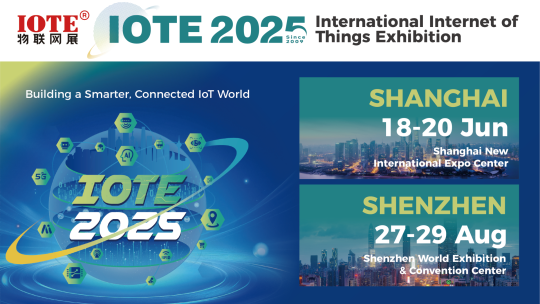
0 notes
Text
Automotive Relay Market: Key Players and Competitive Landscape
The global automotive relay market size is expected to reach USD 24.97 billion by 2030, registering a CAGR of 8.1% during the forecast period, according to a new report by Grand View Research, Inc. Increasing vehicular safety regulations in various regions across the globe is driving the automotive relay market. Further, increasing adoption of electric vehicles amongst passenger car segment end users has made automotive electronics including the automotive relay industry to gain significant market share.
Systems such as advanced driver assistance systems (ADAS), electronic stability control, electronic steering systems, brake-by-wire systems, and airbags are gaining momentum across the globe, owing to their safety and comfort benefits. Strict safety guidelines employ substantial pressure on Tier-1 suppliers and the OEMs to design improved safety systems for automobiles. Furthermore, there is a growing demand for enhanced comfort and convenience in automobiles.
Many governments provide lucrative offers to promote the selling and usage of Electric Vehicles EVs. Tax benefits are provided at the time of purchase. However, the extent of the exemption depends on the size of the batteries used in the vehicle. In the United States, insurance companies provide discounts on insurance policies to customers, and utility companies are offering low electricity rates. Also, few states offer credits to electric vehicle manufacturers and buyers for their costs and purchase of charging equipment. Many European countries follow incentive-based programs for promoting EVs. Countries, like Germany and Austria, offer tax exemptions and reductions.
Gather more insights about the market drivers, restrains and growth of the Automotive Relay Market
Automotive Relay Market Report Highlights
• The increasing vehicular safety norms across the globe and the growing adoption of electric passenger car vehicles amongst end-users are expected to drive the market.
• Electric automotive parts have diversified over the past decade, leading to an increase in the number of relays used as switching devices as well as variation in the required features of each relay
• Asia Pacific is a key revenue-generating region and captured a significant market share in 2022. The region exhibits a high growth potential, which may be attributed to high vehicle demand in this region.
Browse through Grand View Research's Automotive & Transportation Industry Research Reports.
• The global automated storage and retrieval systems market size was estimated at USD 6.53 billion in 2024 and is projected to grow at a CAGR of 8.0% from 2025 to 2030.
• The global automotive chips market was valued at USD 41.47 billion in 2023 and is projected to grow at a compound annual growth rate (CAGR) of 11.2% from 2024 to 2030.
Automotive Relay Market Segmentation
Grand View Research has segmented the global automotive relay market based on product, vehicle type, application, and region:
Automotive Relay Product Outlook (Revenue, USD Million, 2017 - 2030)
• PCB Relay
• Plug-in Relay
• High Voltage Relay
• Others
Automotive Relay Vehicle Type Outlook (Revenue, USD Million, 2017 - 2030)
• Passenger Vehicles
• Commercial Vehicles
• Electric Vehicles
Automotive Relay Application Outlook (Revenue, USD Million, 2017 - 2030)
• Resistive Loads
o HVAC
• Capacitive Loads
o Engine Management Module
o Fog Lights
o ABS Module
o Front and Rear Beam
• Inductive Loads
o Power Window
o Central Lock
o Cooling Fan
o Clutches
Automotive Relay Regional Outlook (Revenue, USD Million, 2017 - 2030)
• North America
o U.S.
o Canada
• Europe
o UK
o Germany
o France
• Asia Pacific
o China
o Japan
o India
o Australia
o South Korea
• Latin America
o Brazil
o Mexico
• Middle East and Africa
o United Arab Emirates (UAE)
o Saudi Arabia
o South Africa
Order a free sample PDF of the Automotive Relay Market Intelligence Study, published by Grand View Research.
#Automotive Relay Market#Automotive Relay Market Size#Automotive Relay Market Share#Automotive Relay Market Analysis#Automotive Relay Market Report
0 notes
Text
Rising Internet Penetration Propels IoT Chip Industry
The IoT chip industry generated $427.0 billion in revenue in 2021, and it is expected to reach $693.8 billion by 2030, growing at a CAGR of 5.5% during the forecast period.
The increasing internet penetration in emerging markets is driving the adoption of connected devices and the development of networking protocols. Moreover, the rising number of AI-driven devices is fueling industry growth. Currently, there are over 10 billion active IoT devices, creating a significant demand for IoT chips.

North America holds a major share of the IoT chip market and is projected to dominate by 2030, with revenues surpassing $300 billion. This growth is attributed to the expansion of the research and development sector and the increasing demand for consumer electronics.
The development of advanced infrastructure is leading to a growing need for improved wireless connectivity solutions, particularly in smart cities. This drives demand for logic devices and integrated circuits (ICs) in connected vehicles, smart transportation systems, and residential applications.
Logic devices represent the largest segment of the market, driven by their superior prototyping and reprogramming capabilities for debugging. Field-programmable gate arrays (FPGAs), which offer customizable logic blocks, are widely adopted due to their cost-effectiveness, programmability, and high performance.
The increasing demand for smartwatches and higher shipments of logic devices are key factors propelling the market. FPGAs are faster than other devices and can be modified, reconfigured, and updated to handle a wide range of tasks.
For instance, more than 14 million wearable devices were shipped in 2021, with over 12 million being smartwatches. The rising demand for wearables to monitor health metrics such as blood oxygen levels, respiration, and heart rate is contributing to the market’s expansion.
The sensor segment is expected to experience the fastest growth in the coming years, driven by the growing use of temperature and pressure sensors in manufacturing. The increasing application of motion and position sensors in smart electronics, such as alarms, security cameras, and live video monitoring systems, is also fueling growth in this category.
The surge in consumer electronics sales, particularly smart appliances like thermostats, door locks, and home monitors, is further driving industry growth.
In the healthcare and fitness sectors, the rising popularity of smartwatches is capturing a significant market share. IoT chips enable real-time tracking of medical equipment such as oxygen pumps, wheelchairs, and defibrillators.
Connected wearable devices, including smartphones, smartwatches, smart jewelry, and smart shoes, account for a notable share of the market. These devices, which utilize IoT chips to track various functions, are driving industry growth by facilitating sensor integration and internet connectivity.
As a result, the increasing popularity of smartwatches is significantly boosting the IoT chip industry.
Source: P&S Intelligence
#IoT Chip Market Share#IoT Chip Market Size#IoT Chip Market Growth#IoT Chip Market Applications#IoT Chip Market Trends
1 note
·
View note
Text
Washer Industry: Types, Applications, Market Players, Regional Growth Analysis, and Future Scenarios (2023 - 2030)
Washer Market Scenario and Scope
The Washer Market is projected to grow from USD 1.80 Billion in 2022 to USD 2.10 Billion by 2030, at a CAGR of 1.99% during the forecast period.
Get a Sample PDF of the Report: https://www.reportprime.com/enquiry/sample-report/327
Market Trends Influencing the Washer Market
Key trends driving the washer market include:
Increasing Household Incomes: Enhanced purchasing power drives demand for efficient appliances.
Rising Consumer Awareness: Growing preference for energy-efficient and high-performance washers.
Surge in Housing Projects: Expanding housing sector boosts washer demand.
Front-Loading Machines Popularity: Higher efficiency and energy-saving advantages increase their adoption.
Demand for Intelligent Washing Machines: Technological advancements and smart appliances contribute to market growth.
Get a Sample PDF of the Report: https://www.reportprime.com/enquiry/sample-report/327
Washer Market Segment Analysis
Washer Market, by Type:
Plain
Spring
Locking
Others
Washers include various types such as plain, spring, locking, and others, catering to different industrial and commercial needs.
Inquire or Share Your Questions If Any Before Purchasing This Report https://www.reportprime.com/enquiry/pre-order/327
Washer Market, by Application:
Automotive
Electronics
Machinery
Construction
MRO (Maintenance, Repair, and Operations)
Others
Applications of washers span across automotive, electronics, machinery, construction, MRO, and other sectors, driving the market in diverse industries.
Washer Competitive Analysis
Würth
Bossard
Shanghai PMC
Nord-Lock
Fontana Gruppo
Schnorr
Growermetal
STANLEY
Ciser
MW Industries
PCC
LISI
HEICO
Gem-Year
Mubea
Aoyama Seisakusho
Araymond
ITW Shakeproof
TR Fastenings
Boltun Corporation
Key players such as Würth, Bossard, and Shanghai PMC lead the market in production and innovation, influencing global trends and competition.
Buy this Report: https://www.reportprime.com/checkout?id=327&price=3590
Regulatory and Legal Factors
The washer market is affected by various regulatory and legal factors, including import-export laws, product standards, environmental regulations, safety regulations, and government initiatives. These factors vary by region and impact market conditions, pricing, and distribution of washers and related products.
0 notes
Text
Tire Pressure Monitoring System (TPMS) Market Size Report 2024-2032
IMARC Group's report titled " Tire Pressure Monitoring System (TPMS) Market: Global Industry Trends, Share, Size, Growth, Opportunity and Forecast 2024-2032", offers a comprehensive analysis of the industry, which comprises insights on the global tire pressure monitoring system (TPMS) market share. The global market size reached US$ 6.9 Billion in 2023. Looking forward, IMARC Group expects the market to reach US$ 14.3 Billion by 2032, exhibiting a growth rate (CAGR) of 8.2% during 2024-2032.
For an in-depth analysis, you can refer sample copy of the report: https://www.imarcgroup.com/tire-pressure-monitoring-system-market/requestsample
Factors Affecting the Growth of the Tire Pressure Monitoring System Industry:
Tire Maintenance and Fuel Efficiency:
Proper tire maintenance is essential as it directly impacts the performance and longevity of tires. Tires, when underinflated, experience uneven wear and increased rolling resistance, leading to decreased fuel efficiency. A tire pressure monitoring system (TPMS) plays a pivotal role in this by continuously monitoring tire pressure and alerting drivers to any deviations from the recommended levels. By maintaining optimal tire pressure, TPMS helps prevent premature tire wear, which not only extends the lifespan of tires but also reduces the frequency of replacements, saving both users and fleet operators costs. Moreover, by ensuring that tires are adequately inflated, TPMS contributes to improved fuel efficiency, as tires operating at the correct pressure require less energy to roll, resulting in reduced fuel consumption.
Rising Adoption in the Commercial Vehicle Sector:
The increasing adoption of TPMS in the commercial vehicle sector is contributing to the market growth. Commercial vehicles, such as trucks and buses, are typically subjected to heavy use and long-distance travel, making tire maintenance a critical aspect of their operation. TPMS systems in these vehicles offer benefits by ensuring optimal tire pressure, which is crucial for the safety, fuel efficiency, and longevity of tires in commercial use. Additionally, the economic benefits of reduced downtime and maintenance costs associated with tire failures are considerable for fleet operators. The growing demand for TPMS in the logistics and e-commerce sectors is positively influencing the market.
Integration with Advanced Driver Assistance Systems (ADAS):
The rising integration of TPMS with advanced driver assistance systems (ADAS) is impelling the growth of the market. ADAS technologies, such as electronic stability control, anti-lock braking systems, and traction control, are becoming common in modern vehicles. Integrating TPMS with these systems enhances overall vehicle safety and performance. Additionally, accurate tire pressure data from TPMS is utilized by stability control systems to make more effective adjustments, thereby improving vehicle handling and safety. This integration is part of a broader trend of connected and autonomous vehicles, where various sensors and systems within the vehicle communicate and work together.
Leading Companies Operating in the Global Tire Pressure Monitoring System (TPMS) Industry:
ATEQ, Bartec USA LLC
Bendix Commercial Vehicle Systems LLC (Knorr Brake Holding Corporation)
Continental Aktiengesellschaft
Denso Corporation
Hamaton Automotive Technology Co. Ltd. (Hangzhou Hamaton Intelligent Control Holdings Co. Ltd.)
Huf Hülsbeck & Fürst GmbH & Co. KG
Nira Dynamics AB
NXP Semiconductors N.V.
Pacific Industrial Co. Ltd.
Sensata Technologies Inc.
WABCO Holdings Inc. (ZF Friedrichshafen AG).
Tire Pressure Monitoring System Market Report Segmentation:
By Type:
Direct TPMS
Indirect TPMS
Direct TPMS exhibits a clear dominance in the market due to its real-time monitoring capabilities, ensuring precise tire pressure data and enhancing safety for vehicle owners.
By Technology:
Intelligent TPMS
Conventional TPMS
Conventional TPMS represents the largest segment as it offers a cost-effective solution for tire pressure monitoring, making it the preferred choice among individuals and manufacturers.
By Vehicle Type:
Passenger Vehicles
Commercial Vehicles
Passenger vehicles account for the majority of the market share. They have a larger user base, leading to higher demand for TPMS.
By Distribution Channel:
OEMs
Aftermarket
OEMs hold the biggest market share, owing to the direct integration of TPMS in new vehicles, providing users with a pre-installed and reliable solution.
Regional Insights:
North America: (United States, Canada)
Asia Pacific: (China, Japan, India, South Korea, Australia, Indonesia, Others)
Europe: (Germany, France, United Kingdom, Italy, Spain, Russia, Others)
Latin America: (Brazil, Mexico, Others)
Middle East and Africa
Asia Pacific dominates the market, attributed to the rising production of vehicles and increasing awareness about safety measures.
Global Tire Pressure Monitoring System Market Trends:
With the proliferation of the internet of things (IoT) and advancements in wireless communication, TPMS is becoming part of the connected ecosystem of vehicles. These systems offer real-time data transmission and can be integrated with smartphone apps, allowing drivers to monitor tire pressure remotely. This integration enhances convenience and ensures continuous monitoring, even when the vehicle is not in use. Besides this, the growing development of advanced sensor technologies is leading to the creation of more accurate and durable sensors capable of providing precise tire pressure readings under varying conditions. These new sensors are not only more reliable but also smaller and easier to integrate into different tire types, including those for heavy-duty vehicles.
Note: If you need specific information that is not currently within the scope of the report, we will provide it to you as a part of the customization.
About Us:
IMARC Group is a leading market research company that offers management strategy and market research worldwide. We partner with clients in all sectors and regions to identify their highest-value opportunities, address their most critical challenges, and transform their businesses.
IMARCs information products include major market, scientific, economic and technological developments for business leaders in pharmaceutical, industrial, and high technology organizations. Market forecasts and industry analysis for biotechnology, advanced materials, pharmaceuticals, food and beverage, travel and tourism, nanotechnology and novel processing methods are at the top of the companys expertise.
Our offerings include comprehensive market intelligence in the form of research reports, production cost reports, feasibility studies, and consulting services. Our team, which includes experienced researchers and analysts from various industries, is dedicated to providing high-quality data and insights to our clientele, ranging from small and medium businesses to Fortune 1000 corporations.
Contact Us:
IMARC Group
134 N 4th St. Brooklyn, NY 11249, USA
Email: [email protected]
Tel No:(D) +91 120 433 0800
United States: +1-631-791-1145 | United Kingdom: +44-753-713-2163
0 notes